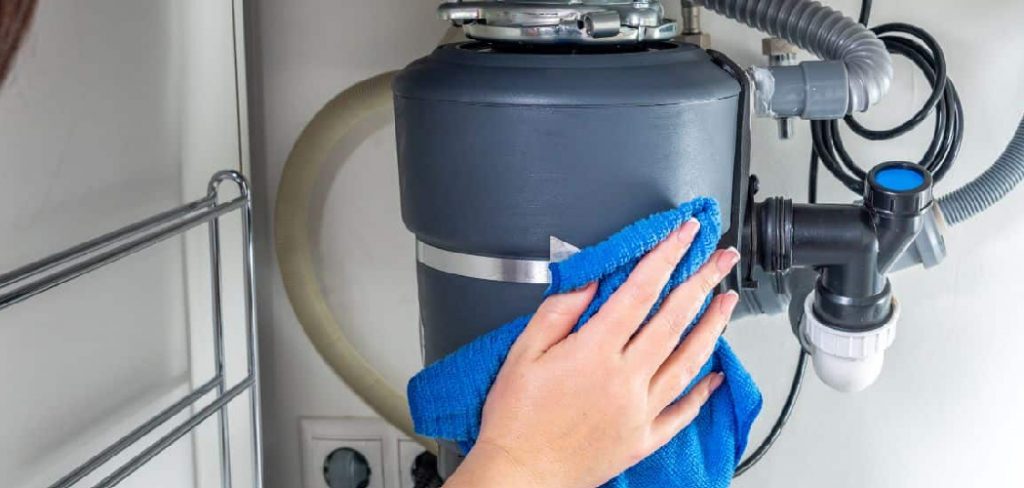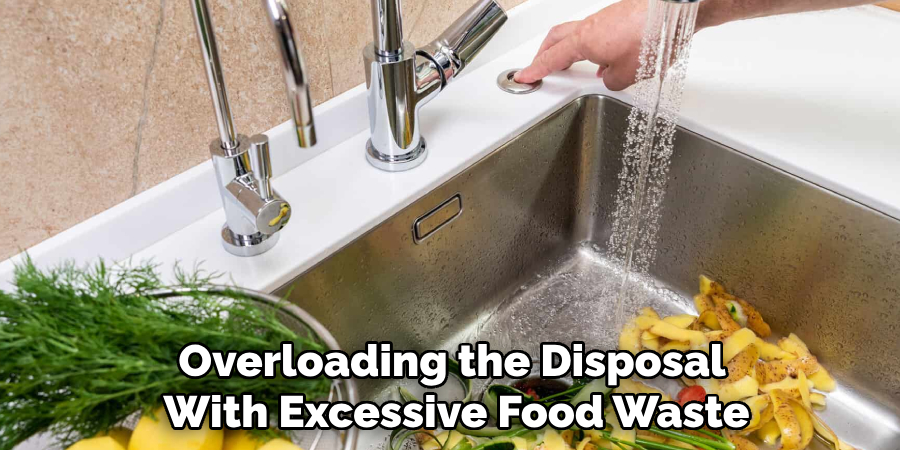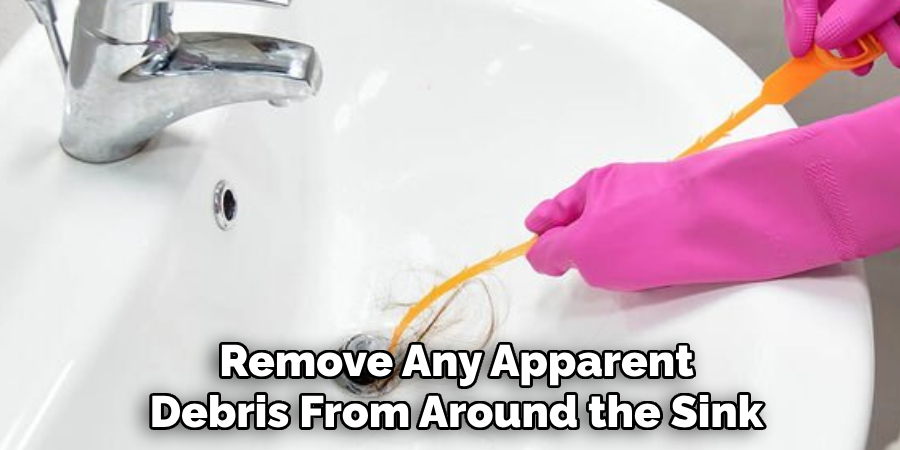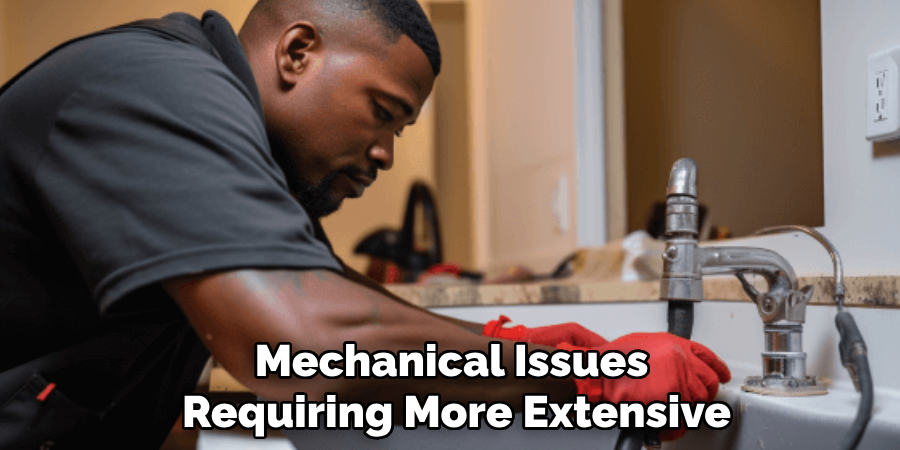A humming garbage disposal can be frustrating, often indicating an issue that needs immediate attention. The ear-piercing sound usually signifies that while the disposal receives power, it might not be grinding food waste effectively, disrupting your kitchen routine.

Understanding what causes this noise is crucial for a simple and quick fix. Common causes behind a humming sound include jammed disposal, an overloaded unit, or electrical issues that interfere with its normal operation. Recognizing these issues early can save you time and prevent further complications.
This article is designed to guide you through diagnosing and resolving the humming issue in your garbage disposal, helping you restore its efficient functioning. By following our detailed troubleshooting steps, you’ll learn how to fix a garbage disposal humming, ensuring your kitchen remains fully operational and hassle-free.
Understanding Garbage Disposal Humming
What Causes Humming?
Humming in garbage disposal occurs when the motor runs, but the grinding components cannot turn. This auditory signal often points to an obstruction within the disposal’s blades, hindering their ability to spin freely. Items such as small bones, utensils, or large chunks of food can become lodged in the grinding chamber, leading to this issue.
Importance of Addressing the Issue
Ignoring humming disposal can have severe consequences, including potential motor burnout, often necessitating a costly replacement. Early intervention prevents these more significant complications, ensuring that the disposal continues operating efficiently and effectively without requiring an expensive repair or replacement.
Signs of a Problematic Disposal
Recognizing the signs of a problematic disposal is crucial in addressing humming issues promptly. Key indicators include the unit making a persistent humming noise when activated, improper grinding of food waste leading to frequent clogs, and a noticeable decrease in overall performance.
Typical Conditions Leading to Humming
Several conditions typically lead to a humming disposal. These include objects lodged within the grinding chamber, overloading the disposal with excessive food waste, or a motor malfunction. Recognizing these causes allows for timely troubleshooting and maintenance to keep your disposal in optimal condition.

Safety Precautions
Ensuring safety while troubleshooting your garbage disposal is paramount. Turn Off the Power: Before commencing any form of inspection or repair, make certain that the disposal unit is completely turned off. This involves switching off the unit at its power control and unplugging it from the electrical outlet to avoid any accidental activation. Use Protective Gear:
When dealing with potentially dangerous equipment like garbage disposal, wearing appropriate protective gear is essential. Equip yourself with rubber gloves and safety goggles to safeguard against sharp blades, unexpected splashes, or debris that might be present. Avoid Using Your Hands: As a safety rule, never insert your fingers or hands directly into the disposal grinder.
If there’s a need to inspect or remove any obstruction, utilize tools such as tongs or a flashlight for a thorough examination, ensuring your hands remain safe from potential injury.
How to Fix a Garbage Disposal Humming: Inspecting the Garbage Disposal
Inspecting your garbage disposal is a crucial step in addressing the humming issue effectively.
Step 1: Listen for Humming:
Begin by turning on the garbage disposal to confirm it is humming. If the appliance remains silent, the underlying issue may be different, such as a power problem, which will require a separate investigation.
Step 2: Check for Jams:
Using a flashlight, peer into the disposal to inspect for jams. Look for visible obstructions that could be causing the grinding components to stall, such as accumulated food scraps or utensils that may have accidentally fallen into the grinding chamber.
Step 3: Manually Rotate the Blades:
Use a hex wrench, often supplied with the disposal unit, to manually rotate the flywheel and alleviate any jams. Insert the wrench into the hex-shaped hole beneath the disposal unit and rock the flywheel back and forth. This action can dislodge any items trapped between the blades and restore movement.
Step 4: Check the Drain:
Examine the disposal’s drain for any clogging substances that might contribute to the humming sound. Remove any apparent debris from around the sink or within the disposal itself, ensuring an unobstructed pathway for waste and water flow.

How to Fix a Garbage Disposal Humming: Clearing the Jam
Following systematic steps can help resolve the issue without causing damage when dealing with jammed garbage disposal.
Step 1: Disconnect Power Again:
Before attempting any maintenance, ensure the disposal unit is completely turned off. This safety step involves unplugging the unit or switching off the circuit breaker to prevent accidental activation during clearing.
Step 2: Use Tongs or Pliers:
Upon visual inspection, if you spot foreign objects like utensils or small bones, use tongs or pliers to carefully extract them. Ensure that your hands remain outside the grinding chamber to avoid potential injuries from sharp components.
Step 3: Use a Wooden Spoon:
For food particles or smaller obstructions hindering blade movement, use the handle of a wooden spoon to gently push and maneuver the blades. This action can help dislodge jammed waste and restore the disposal’s operational flow, making it more manageable to clear clogs without direct hand contact.
Step 4: Run Water Through the Disposal:
Once the major obstruction is cleared, restore power to the disposal by plugging it back in or reactivating the circuit breaker. Run cold water through the disposal while turning it on, which facilitates the flushing out of any minor debris remnants, ensuring the grinding components are clean and free-moving.
Step 5: Check for Residual Sounds:
After these procedures, listen closely as the disposal runs. Persistent humming despite these efforts may indicate deeper mechanical issues requiring more extensive troubleshooting or professional intervention, ensuring the disposal continues to function effectively.

Addressing Overloads and Electrical Issues
Dealing with overloads and electrical issues is vital for maintaining your garbage disposal in good working order. Here is a step-by-step guide to help you address these concerns effectively:
Step 1: Avoid Overloading:
Always feed small amounts of food waste into thegradually into the disposal rather than all at oncedisposal gradually, rather than all at once, to prevent jams and potential overloads that can cause humming or motor strain.
Step 2: Check the Reset Button:
If your unit continues to hum despite clearing jams, locate the red reset button typically found at the bottom of the disposal. Press this button to reset the motor and potentially resolve the humming issue.
Step 3: Inspect Electrical Connections:
Ensure that the power cord is securely plugged into the outlet. Check for any visible signs of wear or damage to the cord that might affect the unit’s operation.
Step 4: Test the Outlet:
Use another appliance to verify that the outlet is reliably delivering power. If the outlet fails to work, consulting an electrician may be necessary to resolve the issue and restore proper functionality.
Step 5: Consider Professional Help:
Despite resetting and connection checks, persistent humming may indicate a more significant electrical issue or a malfunctioning motor. A professional assessment can ensure a thorough diagnosis and the necessary repair or replacement for continued efficient operation.
Preventive Maintenance Tips
Regular maintenance of your garbage disposal boosts its longevity and enhances performance.
Regular Cleaning: To maintain a fresh-smelling and efficient disposal, grind a few ice cubes and citrus peels periodically. The ice helps dislodge minor clogs, while the peels act as a natural deodorizer, eliminating any lingering odors.
Avoid Certain Foods: Protect your disposal from potential damage by steering clear of disposing fibrous materials such as celery and onion skins, which can entangle the blades, as well as hard items like bones, and greasy substances that can solidify and cause blockages.
Run Water During Use: Always run a steady stream of cold water during the disposal’s operation and continue for a few seconds after you turn it off. This practice ensures smooth waste passage through the system and helps prevent clogs.
Schedule Periodic Inspections: Regular inspections, particularly for older units, can preemptively identify and resolve issues, averting costly repairs. Consulting a professional for a thorough inspection can extend your unit’s service life.
Know Your Disposal’s Limitations: It is crucial to understand the capacity and operational boundaries of your specific disposal unit. Overloading can lead to frequent jams and unnecessary strain on the motor, so use it within recommended limits.
When to Call a Professional
Persistent Humming: If the disposal continues to hum despite following these steps, it may indicate a serious issue with the motor or electrical components that require professional help. Physical Damage: If you notice physical damage to the disposal, like cracks or loose components, it’s best to consult a plumber for repairs or replacement.
Trying to fix these issues without proper expertise can cause further damage and potential safety hazards. Electrical Issues: If you suspect problems with the electrical supply or wiring, an electrician should handle these matters for safety. Addressing electrical problems improperly can result in shocks or power outages, so professional assessment is crucial.
Additionally, if there’s any doubt about performing repairs yourself, seeking expert guidance ensures that the disposal is returned to optimal working condition, prolongs its lifespan, and prevents further issues from arising. Prioritizing professional intervention protects both your appliance and personal safety.

Conclusion
A humming garbage disposal can often be resolved through simple troubleshooting and maintenance, ensuring it continues to operate efficiently. By learning how to fix a garbage disposal humming, homeowners can address common causes of humming, such as jams or electrical issues, and apply preventive measures like avoiding overloading and conducting regular maintenance checks.
Timely action is crucial; addressing the humming promptly can prevent more significant issues from developing and extend the life of your disposal. Performing regular upkeep not only maintains functionality but also ensures your kitchen remains a convenient and effective workspace.
Should DIY attempts fail to resolve the humming, reaching out to a professional can provide more definitive solutions, helping maintain the disposal’s optimal performance. Always remember, sometimes expert intervention is the best course of action to keep your garbage disposal running smoothly and effectively.
